Outside Lands Music and Art Festival is an annual event since 2008 featuring top music groups and attracting tens of thousands of visitors to Golden Gate Park San Francisco. In August 2013, the sixth edition of the three day music festival included acts like Red Hot Chili Peppers, Paul McCartney, Vampire Weekend, The Head and the Heart and dozens more.
Outside Lands is also the historic name for the area that now encompasses Golden Gate Park.
Polo Field Golden Gate Park is where music events like Outside Lands and Bay to Breakers Footstock are held. On New Year’s Eve this week the field was occupied by Canadian geese and a few runners on the track.
A few years back I was driving my car through Golden Gate Park when one of the early editions of Outside Lands was happening. At that time I do not think I was aware that Outside Lands was the historic name for the area that is now Golden Gate Park in San Francisco.
I have seen the aerial view of Golden Gate Park several times when flying in and out of SFO. More commonly for me is a ground level view of Golden Gate Park.
Angler’s Lodge, Golden Gate Park
Central Park in Manhattan was developed between 1858 and 1873 and offers 840 acres of park land to residents and visitors in the country’s most populous city. Frederick Law Olmsted and Calvert Vaux won the design competition for the original Central Park.
Golden Gate Park was an idea developed in the 1860s to transform an area of old sand dunes stretching inland from Ocean Beach on the Pacific Ocean western side of the San Francisco peninsula known as the Outside Lands. The area was considered uninhabitable at the time, although there were groups of people with dwellings living in the Outside Lands.
William Hammond Hall surveyed and mapped the land in 1870 and became the San Francisco Park Commissioner in 1871. Frederick Law Olmsted consulted on the project design.
The primary plan was to establish plants and trees to stabilize the sand dunes. John McLaren who had apprenticed in Scotland with some of the foremost 19th century gardeners worked as W.H. Hall’s assistant in the 1870s. By 1875, over 60,000 trees had been planted, primarily using Monterey pine, Monterey cypress and Eucalyptus globulus. By 1879, more than 155,000 trees had been planted. Many of these trees are the great trees standing today.
Eucalyptus globulus trees near bison paddock.
Monterey pine trees by American bison paddock.
Monterey cypress trees around the Dutch Windmill (North windmill) 1903. Two windmills were built on the west end of Golden Gate Park in the north and south corners to pump groundwater into the park. The windmills are across the street from Ocean Beach.
Tourists to Golden Gate Park are likely to spend most of their time in the eastern half of the park where the museums are located. De Young Fine Arts Museum, California Academy of Sciences with Steinhart Aquarium and Japanese Tea Gardens are the most popular attractions in Golden Gate Park.
Highway 101, the Golden Gate Bridge route transects Golden Gate Park into the east and west sections at 19th Avenue. The photos in this post are all from the western side of the park.
Is that a buffalo in Golden Gate Park?
We grew up hearing the animal name buffalo in American wild west stories. These animals are correctly called the American Bison. Golden Gate Park first acquired American bison for breeding on February 13, 1891. At that time, the American bison was at its lowest population with estimates that only around 750 to 1,100 bison existed in the USA in 1890. The destructive influence of hunting these creatures to the point of near extinction had wiped out 30 to 60 million bison from the North American plains in little more than 50 years.
American bison, close-up of one of eight female bison currently living in Golden Gate Park. The bison are behind an electric fence. More people have been attacked by bison in Yellowstone Park over the past 30 years than bears.
The bison is the largest living animal native to North America. Males are about 1/3 larger than females shown in these photos and stand about six-feet tall at the shoulder and weigh more than 2,000 pounds.
American bison live to be about 25 years old. The oldest Golden Gate Park bison died at the age of 30 years last July 2013. The bison are cared for by the San Francisco Zoo staff.
In the early 20th century there were several animal species kept in Golden Gate Park until the San Francisco Zoo opened in 1929, three miles south of the park.
The Trickster Coyote greets Kelley in the woods
When I was a kid, my family would warn me about the danger of wandering on the dirt paths in the woods of Golden Gate Park. Kelley and I love to spend our time finding secluded places in the woods where one can feel solitude in the middle of a major city. Never had a problem. There are many police officers on park patrol.
While I was trying to capture artsy shots like the Angler’s Lodge photo in this post, Kelley headed into the woods back to our car. We had passed a posted ‘Coyote Alert’ sign near our parked car.
Kelley was standing near the equestrian ring when she watched a coyote walk right by this sign and head west along a trail into the woods. While I was disappointed to have missed one of the seven coyotes resident in Golden Gate Park (according to the police officer), I was happy for Kelley to have seen a coyote in 2013 after my two coyote sightings in Death Valley National Park this year. Golden Gate Park often has unexpected surprises for visitors.
The Beach Chalet
The Beach Chalet is a historic 1925 building at the northwest corner of the park at Great Highway. The building was originally established as a restaurant with changing rooms for visitors to Ocean Beach and there is The Beach Chalet brewpub/restaurant on the second floor today.
The ground floor Mural Room of the Beach Chalet features wall-to-wall murals painted in a WPA Federal Art Project in 1936-37. The Mural Room also has exhibits on the history of Golden Gate Park.
John McLaren seated receiving a redwood sapling.
John McLaren was the Superintendent of Golden Gate Park for 53 years from 1890 to 1943. During his tenure over one million trees were planted in the park. McLaren worked to keep the park from being overdeveloped. It is said he favored keeping Golden Gate Park a natural space with few buildings. The western side of the park is far less developed than the eastern side with its museums and other large structures like Kezar Stadium.
The area of Golden Gate Park that now houses the museums and Japanese Tea Gardens was the site of the 1894 Midwinter Fair held at a time when the US was in a deep recession. The idea was to showcase San Francisco as a year-round wonderful place to be, even in winter, and bring some tourism revenue to the city. The fair opened on January 27, 1894 with 180 structures built in six months on land that had been sand dunes the summer before.
Photograph of the 1894 Midwinter Exposition at the Beach Chalet Mural Room Golden Gate Park visitor center.
The Japanese Tea Garden, one of the premier attractions of Golden Gate Park today, was established from the Japanese Village exhibit at the San Francisco 1894 Midwinter Expo.
The Beach Chalet Mural Room at Golden Gate Park.
Park Commission San Francisco 1900 tiled sign at entrance of the Beach Chalet, Golden Gate Park.
Tourist Transportation to Golden Gate Park
Golden Gate Park is one of the major gems of San Francisco. The problem for a tourist is Golden Gate Park is a long public transportation adventure of about one hour each way to bus six miles across the city from the tourist hotel areas of Union Square, South of Market or Fisherman’s Wharf.
A taxi will get you there in about 25 minutes at a cost around $27 to $32 each way.
Cycling to the park is ideal. Walking to the park takes two to three hours from the Ferry Building or Fisherman’s Wharf area. I have walked to the park before from the Ferry Building during the annual Bay to Breakers running event held each May.
Parking is free in Golden Gate Park. My travel pattern for hotel stays in San Francisco often includes arriving in San Francisco by the Great Highway along Ocean Beach and heading into Golden Gate Park to start my San Francisco adventure. Then, after time touring the park, I plan my hotel arrival into downtown for around 6pm when many of the metered parking sites are free for the night. Most San Francisco hotels charge between $40 and $60 per night for parking, so finding free parking or after 5pm arrival at parking garages and lots in downtown is a big savings on a San Francisco hotel stay.
*****
Ric Garrido of Monterey, California is writer and owner of Loyalty Traveler.
Loyalty Traveler shares news and views on hotels, hotel loyalty programs and vacation destinations for frequent guests.
Follow Loyalty Traveler on Twitter and Facebook and RSS feed or subscribe to a daily email newsletter of Loyalty Traveler blog posts.


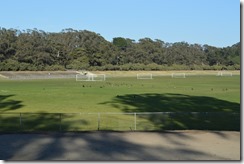
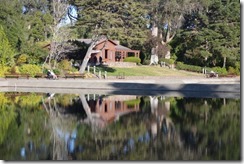


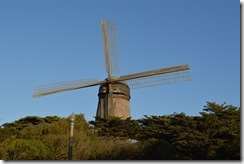
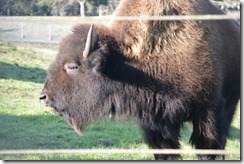

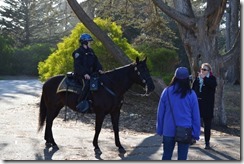
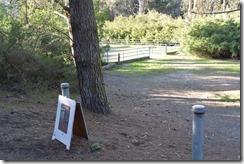

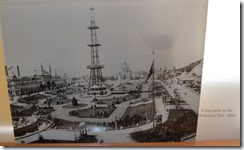
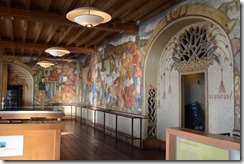
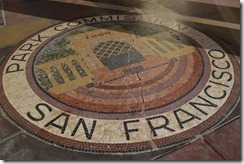

3 Comments
Comments are closed.